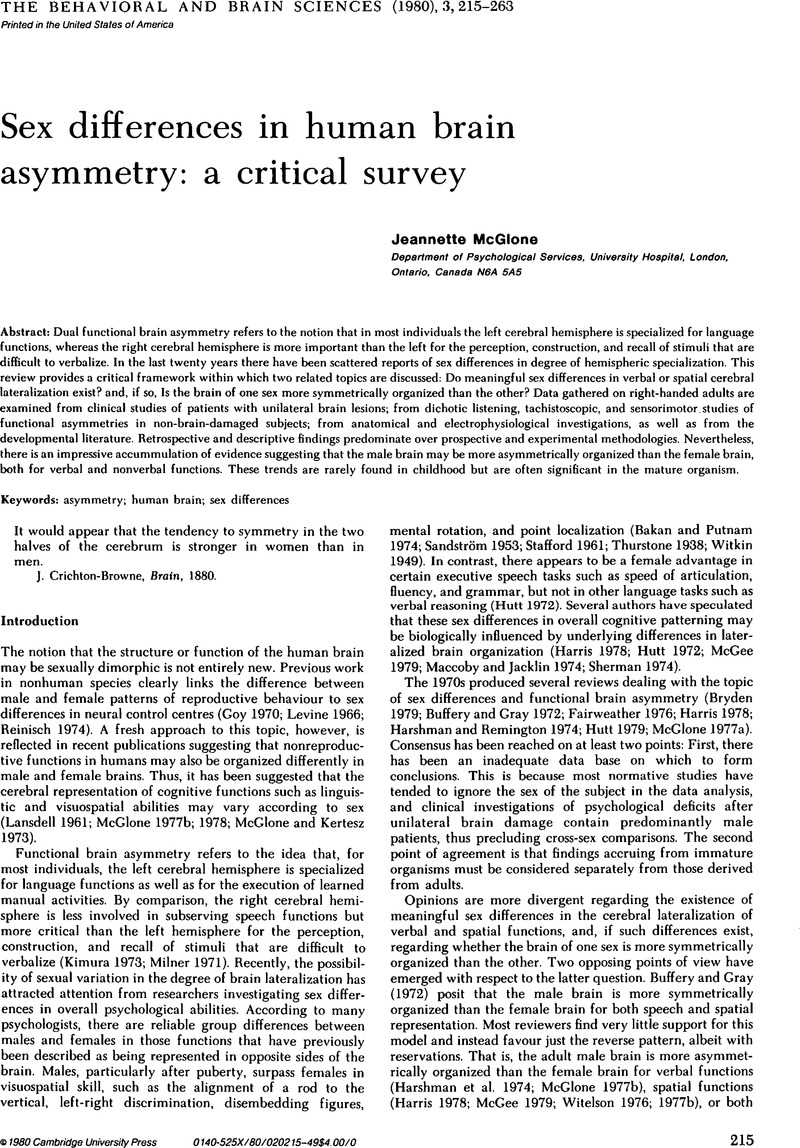Crossref Citations
This article has been cited by the following publications. This list is generated based on data provided by Crossref.
Falk, Dean
1987.
Brain lateralization in primates and its evolution in hominids.
American Journal of Physical Anthropology,
Vol. 30,
Issue. S8,
p.
107.
Durwen, H. F.
and
Linke, D. B.
1987.
Regulation of Cerebral Blood Flow and Metabolism Neurosurgical Treatment of Epilepsy Rehabilitation in Neurosurgery.
Vol. 15,
Issue. ,
p.
152.
Stuart, Anita
and
Fourie, Jacqueline Carolina
1996.
The Role of Temperament and Gender in Functional Hemispheric Asymmetry and the Perception of Emotion.
South African Journal of Psychology,
Vol. 26,
Issue. 1,
p.
52.
Baltaxe, Christiane A. M.
1999.
Handbook of Psychosocial Characteristics of Exceptional Children.
p.
471.





